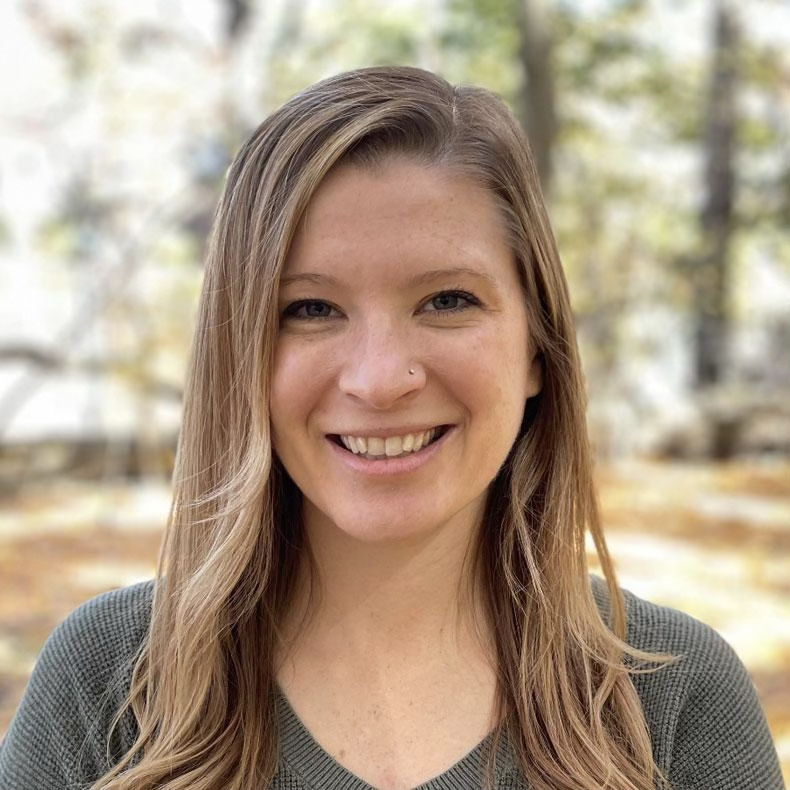Marriage and Family Therapist (MFT) – Career, Salary & State Licensure
Counseling Schools Search
When you click on a sponsoring school or program advertised on our site, or fill out a form to request information from a sponsoring school, we may earn a commission. View our advertising disclosure for more details.
“If our students go the full-time route, then they actually get to begin working in the community on their practicum their very first semester. At many schools, you don’t usually do that until your final year. What we do is give students a year of practicum and a year of internship.”
Niko Wilson, PhD, Assistant Professor, William James College
Therapy can be a critical component to helping individuals overcome mental illness, process a difficult life event, or learn how to cope with daily circumstances. However, people who access therapy are rarely completely alone, and often therapy can involve essential people in the client’s life, such as parents, kids, spouses, or partners. While many therapists can include others in treatment, marriage and family therapists (MFTs) can be the key to holistic treatment and long-term client success in meeting emotional goals.
Marriage and family therapists are specialized counselors who help clients tackle their emotional well-being within the context of their relationships. While therapy might include multiple people, family systems and relationships can be managed and improved even if just one person attends the sessions. MFTs can diagnose disorders such as anxiety, depression, alcoholism, eating disorders, and behavioral issues. They also can provide effective treatment in the form of cognitive behavior therapy, psychotherapy, and structural family therapy.
Day-to-day duties for marriage and family therapists vary but often include meeting with clients, diagnosing mental disorders, offering therapy to individuals and couples, providing referrals, educating clients on new skills to improve their relationships, and maintaining client records. Typical places of employment include hospitals, clinics, social services, government agencies, and outpatient centers.
Becoming a marriage and family therapist takes years of education, training, and a state-issued license. Continue reading to learn about education requirements and check out a detailed state-by-state guide of licensing requirements.
Ask An Expert: Niko C. Wilson, PhD, LMHC, LMFT, NCC

Dr. Niko Wilson is an assistant professor, core faculty member, and the director of the MA in clinical mental health counseling program in the couples and family therapy emphasis at William James College in Newton, Massachusetts.
Dr. Wilson received her BS in psychology from the University of Central Florida, followed by an MS in counseling psychology from Palm Beach Atlantic University and a PhD in counselor education and supervision from the University of Central Florida. Her research and practice interests include:
- Couples and Families
- Integrated Behavioral Health Care
- Trauma
- Women’s Health
- Neuroscience Education in Counseling
- Clinical Supervision
Dr. Wilson holds the following professional Licenses and certifications:
- Licensed Mental Health Counselor (Florida and Massachusetts)
- National Certified Counselor
- Licensed Marriage and Family Therapist (Florida)
- AAMFT Clinical Fellow Designation
- AAMFT Supervisor in Training
In 2021, she received the Dissertation Award from the University of Central Florida Student Scholar Symposium.
CounselingSchools.com: What sets the couples and family therapy program at William James College apart from others in terms of preparing students for counseling careers?
Dr. Wilson: If our students go the full-time route, then they actually get to begin working in the community on their practicum their very first semester. At many schools, you don’t usually do that until your final year. What we do is give students a year of practicum and a year of internship. And what that ends up doing is it sets students up from the very beginning to have exposure in the community and to start practicing some of their basic skills. They’re not doing full-time counseling at the start, but they do have that 10 to 12 hours a week that they spend at some type of agency that they’re interested in. That sets us apart because not a lot of folks get the chance to be in the community right at the start of their education.
If they choose the part-time option, then they get a whole year of classes, and then a year of practicum, and a year of internship. A lot of students end up feeling like they got more experience and more practice because they had supervised time with the faculty, so they’re getting a lot of supervision and support along the way.
CounselingSchools.com: How are students evaluated and assessed throughout the couples and family therapy program at William James College?
Dr. Wilson: The majority of the faculty that teach the courses are core faculty. Because of that, we have a 12-to-1 ratio for advising. We end up meeting with each advisee individually, a minimum of twice a semester. That helps us evaluate and assess our students well, and it is also another thing that sets us apart from other programs. I have heard sometimes that students at other schools have said that they have advisors, but they don’t know who they are or even what they look like.
For us, we spend a solid amount of time, at least twice a semester, sometimes more, meeting with our advisees one-on-one, talking about their plans for the future, what they want, what they’re learning, and talking about their personal and professional development. We use both summative and formative evaluations. Students are evaluated through in-class performance, experiential activities, papers, exams, mock sessions, and by their site supervisors, who the faculty work closely with.
How to Become a Marriage and Family Therapist
Step 1: Graduate from High School or Obtain a GED (Four Years)
Completing high school or a GED is the first step toward becoming a marriage and family therapist. Students can prepare for this career while still in high school by focusing on courses such as psychology, social sciences, English, and math. Advanced Placement (AP) classes are also good because students can earn college credits before graduating high school and improve their college applications.
Step 2: Complete a Bachelor’s Degree (Four Years)
Most master’s programs require applicants to have earned a bachelor’s degree, making this a necessary step in this career. Typical majors include psychology, sociology, social work, and education, although students from any major can become marriage and family therapists.
Volunteering or working in agencies that serve families and children can help boost graduate school applications and provide valuable experience to prepare for this career.
Step 3: Obtain an Advanced Degree (Two to Eight Years)
A master’s degree in marriage and family therapy or a related field is required in all 50 states to become a marriage and family therapist. These programs vary in length and content, so students should familiarize themselves with their state curriculum requirements to ensure they take all the required coursework. Most programs will include a practicum or internship as well.
Students should ensure the program they attend is at least regionally accredited, if not nationally accredited by the Commission on Accreditation for Marriage and Family Therapy Education (COAMFTE). All states require applicants to have completed their education at an accredited institution, and many states recognize COAMFTE accreditation as meeting all the coursework requirements.
Step 4: Apply for Initial State Licensure (Timeline Varies)
An associate or provisional license is required in most states for applicants who have not completed their supervised work experience. Applicants will have to meet all the educational requirements, arrange for supervision, complete an application, and pay an application fee.
Step 5: Complete Supervised Practice (One to Three Years)
Supervised work experience as a marriage and family therapist is required in all 50 states. The number of hours varies by state and can be as low as 1,000 and as high as 3,000. Board approval of supervision is often required.
Step 6: Pass State Licensing Exam (Timeline Varies)
All states require candidates to pass an exam for a marriage and family therapist license. The most common exam required is the Marriage and Family Therapist National Examination offered by the Association of Marriage and Family Therapy Regulatory Boards (AMFTRB). This 180-question four-hour exam covers six domains of marriage and family therapy practice. The cost to take the exam is $370.
Some states also required candidates to take jurisprudence exams to demonstrate competency in state laws surrounding marriage and family therapy.
Step 7: Apply for a State License (Timeline Varies)
Once exams, supervised work experience, and education have been completed, candidates may apply for a marriage and family therapist license from their state. States typically require extensive documentation, including official transcripts, letters of recommendation, test scores, background checks, and supervisor verification of work supervision. Applicants will also have to pay an application fee and a licensing fee.
Keep reading to learn about each state’s specific requirements for MFTs.
Licensing & Certification Requirements By State for Marriage and Family Therapists
| State | Licensing Authority | Eligibility & Details | Renewal Requirements |
|---|---|---|---|
| Texas | Texas State Board of Examiners of Marriage and Family Therapists |
The Texas State Board of Examiners of Marriage and Family Therapists issues Licensed Marriage and Family Therapist (LMFT) and Licensed Marriage and Family Therapist Associate (LMFT Associate) licenses. Requirements for an LMFT Associate license are:
Applicants for an LMFT license must meet the requirements for an associate license, as well as:
|
LMFT and LMFT associate licenses issued in Texas must be renewed every two years. Licenses expire on the last day of the therapist’s birth month. Renewals cost $141. LMFTs must complete 30 hours of continuing education per renewal cycle and associates must complete 15. Both must complete at least six hours in ethics. |
What Do Marriage and Family Therapists Do?
Marriage and family therapists work in hospitals, clinics, social service offices, government agencies, outpatient centers, schools, and private practices. Job duties vary based on place of employment, but typical responsibilities include:
- Meeting with families, couples, and children to assess needs and goals
- Talking with clients to help them process their emotions around difficult situations
- Diagnosing mental disorders
- Providing guidance to help clients make decisions about their lives
- Making referrals to healthcare providers or social services
- Educating clients in new techniques to use change behavior or improve relationships
- Assisting clients in improving their family system
- Maintaining client records
How Much Do Marriage and Family Therapists Make?
Marriage and family therapists earn $68,730 per year on average, according to the Bureau of Labor Statistics (BLS May 2023). Pay varies based on education, experience, and place of employment. The percentiles for wages are:
- 10th percentile: $39,090
- 25th percentile: $45,250
- 50th percentile (median): $58,510
- 75th percentile: $78,440
- 90th percentile: $104,710
Marriage and Family Therapist Professional Associations & Resources
- The Association of Marriage and Family Therapy Regulatory Boards (AMFTRB)
- American Association for Marriage and Family Therapy (AAMFT)
- International Association of Marriage and Family Counselors (IAMFC)
- National Council on Family Relations (NCFR)
- International Family Therapy Association (IFTA)
- The American Family Therapy Academy (AFTA)
- The Commission on Accreditation for Marriage and Family Therapy Education (COAMFTE)


